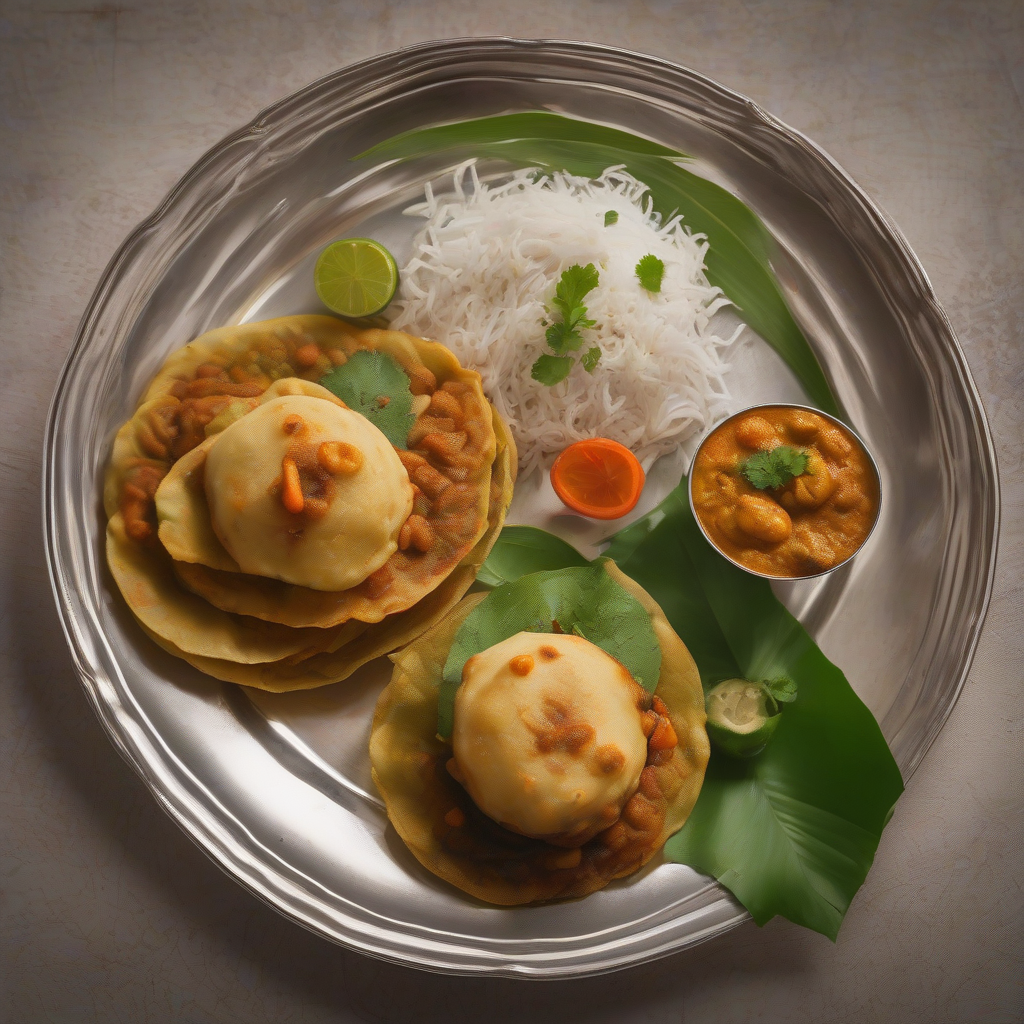Pathiri Magic: Making Soft, Pillowy Goodness at Home, Boss!
Namaste and Assalamualaikum, my food-loving friends! Chef Curry Do’pyaza here, ready to share another gem from the Indian kitchen with all of you. Today, we’re diving into the world of Pathiri – a delightful, thin rice flatbread that’s a staple in many Malabar Muslim (Mappila) households. Think of it as a lighter, softer cousin of the roti, perfect for scooping up flavorful curries.
Pathiri is a dish close to my heart, reminding me of festive celebrations and family gatherings. During Eid, weddings, and other special occasions, you’ll find stacks of these fluffy delights gracing the tables. It’s a dish that brings people together, a symbol of warmth and hospitality.
A Little Trip Down Memory Lane
Pathiri has a rich history, deeply rooted in the culinary traditions of the Malabar coast. It’s believed to have originated centuries ago, evolving from simple rice flour preparations. Over time, it has become a beloved dish, passed down through generations, with each family adding their own unique touch.
Let’s Get Cooking!
Preparation Time: 20 minutes
Cooking Time: 20 minutes
What You’ll Need (Ingredients):
- Ari Podi (Rice Flour): 2 cups – Use a fine, good-quality rice flour for best results.
- Naral Paal (Coconut Milk): 1 cup – Adds a creamy richness to the dough.
- ** গরম পানি (Garam Pani/Hot Water):** 1 cup – For kneading the dough.
- Uppu (Salt): To taste – A pinch to bring out the flavors.
- Tel (Oil): 2 tablespoons – For greasing the pan and the dough.
Let’s Make Some Magic (Instructions):
- Boil the Water: In a saucepan, bring the water to a rolling boil. Add salt to it.
- Mix it Up: In a large bowl, add the rice flour. Slowly pour the boiling water into the flour while mixing continuously with a wooden spoon or spatula. Be careful, it’s hot!
- Knead the Dough: Once the mixture cools down enough to handle, add the coconut milk and start kneading the dough with your hands. Knead it well until it forms a soft, smooth, and pliable dough. This is crucial for soft Pathiris! Add a little oil to your hands while kneading to prevent sticking.
- Rest Time: Cover the dough with a damp cloth and let it rest for about 15 minutes. This allows the gluten to relax, making the Pathiris even softer.
- Roll it Out: Divide the dough into small, equal-sized balls. On a lightly oiled surface or using a rolling board, roll each ball into a thin, circular disc. Aim for a thickness similar to a roti. You can use a rolling pin or gently press it out with your fingers.
- Cook it Up: Heat a flat pan or tawa over medium heat. Once hot, gently place the rolled Pathiri on the pan. Cook for about 30-45 seconds on each side, or until small bubbles start to appear and the Pathiri begins to puff up slightly.
- Gentle Press: Using a clean cloth or spatula, gently press the Pathiri around the edges to ensure even cooking.
- Serve it Hot: Remove the Pathiri from the pan and stack them in a hot pot or casserole dish to keep them warm and soft.
Chef’s Secret Tips for the Best Pathiri:
- Hot Water is Key: Using boiling water is essential for a soft dough.
- Knead, Knead, Knead: Don’t skimp on the kneading! A well-kneaded dough is the secret to soft Pathiris.
- Thin is In: Roll the Pathiris as thinly as possible for the best texture.
- Don’t Overcook: Overcooking will make the Pathiris hard and brittle.
Pathiri: Different Ways to Cook
- Gas Stove: The traditional method, as described above, works perfectly on a gas stove.
- Induction Stove: Follow the same instructions as for a gas stove, adjusting the heat as needed.
- Pressure Cooker (Indirectly): While you can’t cook Pathiri in a pressure cooker, you can use the pressure cooker base as a heavy-bottomed pan for cooking them on the stovetop.
- Oven: Not recommended for traditional Pathiri, as it requires direct heat on a flat surface.
- Microwave: Microwaving is not ideal for cooking Pathiri from scratch, as it can make them rubbery.
- Air Fryer: Not recommended for Pathiri.
- Slow Cooker/Crockpot: Not suitable for making Pathiri.
A Little Bit About Nutrition:
Pathiri is primarily a carbohydrate-rich food, thanks to the rice flour. It also provides some fiber and essential minerals. The coconut milk adds healthy fats and a touch of sweetness. Remember to enjoy it as part of a balanced diet!
Serving Suggestions:
Pathiri is incredibly versatile! It pairs perfectly with:
- Mutton Stew: A classic combination, the soft Pathiri soaks up the rich flavors of the stew beautifully.
- Chicken Curry: Any flavorful chicken curry is a great match for Pathiri.
- Vegetable Korma: For a vegetarian option, try it with a creamy vegetable korma.
- Egg Roast: Another delicious pairing, the Pathiri complements the spicy egg roast perfectly.
- Chutneys and Pickles: Serve with a variety of chutneys and pickles for a flavorful and satisfying meal.
Now It’s Your Turn!
I hope you’re feeling inspired to try making Pathiri at home. It’s a simple yet rewarding recipe that will surely impress your friends and family. Gather your ingredients, put on some good music, and get ready to create some culinary magic!
Don’t be shy – give this recipe a try and share the delicious results with your loved ones. Happy cooking, and remember, the best food is always made with love!
